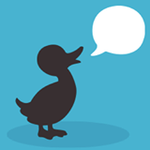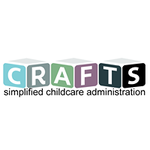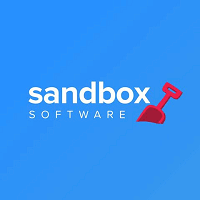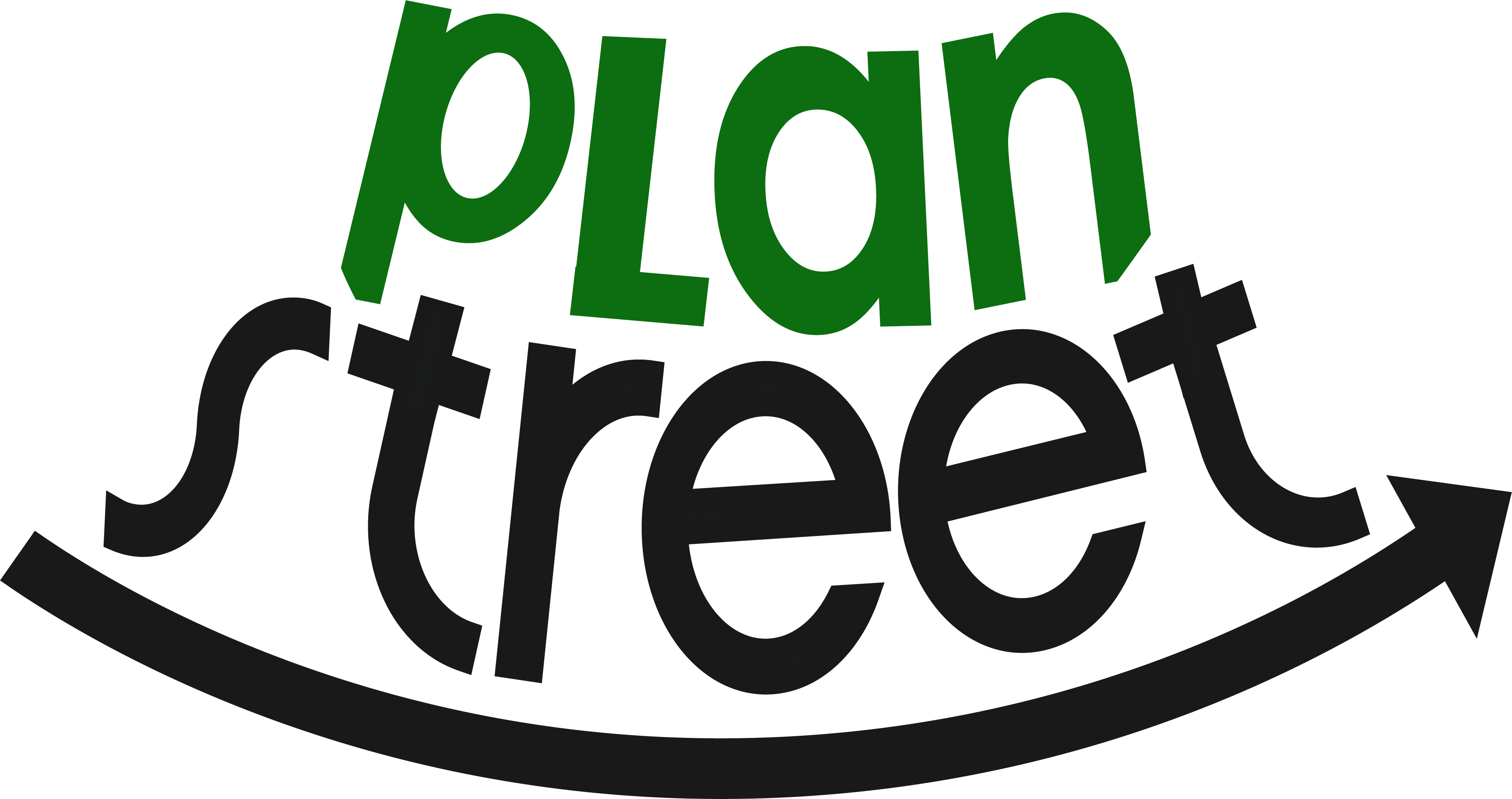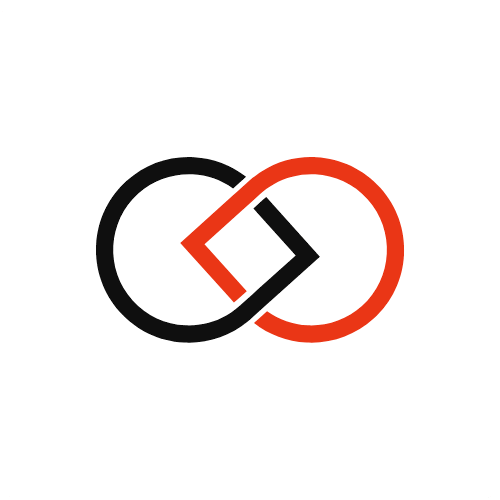What Is Child Care Software?
Child care software is a technology application that is specifically developed to streamline and automate the myriad administrative duties and processes associated with running child care facilities. This software offers a comprehensive solution for child care providers, such as daycare centers, preschools, after-school programs, and camps, to properly manage their daily operations.
At its core, child care software is a digital platform that enables parents to enroll their children, schedule appointments and check-ins, make payments, and communicate with childcare facility staff. This easy system also serves as a central center for child care providers to manage their employees, track attendance, and create invoicing and tax records.
One of the most major benefits of adopting child care software is that it enhances communication between parents and childcare providers. With real-time updates and messaging tools, parents can stay up to speed on their child's activities, meals, and naps, while providers can deliver alarms and announcements fast. In addition to communication, child care software includes capabilities including electronic health records, emergency contacts, and medical information.
These capabilities not only digitize and centralize critical information, but also give simple access to both childcare providers and parents in the event of an emergency. Furthermore, child care software includes scheduling and attendance monitoring functions, which help providers plan and manage their staff and resources more efficiently.
This program also enables simple billing and payment processing, which reduces administrative burden and ensures timely payments. When selecting child care software, make sure to select a platform that provides configurable features and specialized solutions to match your individual daycare demands. Child care software, with its variety, speed, and simplicity, may greatly benefit both childcare workers and parents, making it an excellent investment for any child care program.
What Are The Recent Trends In Child Care Software?
Child care software has seen major modifications and developments in recent years, reflecting the changing demands and expectations of both parents and child care providers. As technology continues to play an important role in the child care business, software solutions have emerged as critical tools for managing day-to-day operations, boosting communication, and improving overall care quality.
we will look at the most recent trends in child care software to help you make an informed decision about which solution is best for your child care business.
1. Cloud-based Software Solutions: With the rise of remote work and the demand for seamless communication, cloud-based child care software has grown popular. These technologies enable caregivers to obtain critical information and manage their work from any place, making it easier to communicate with parents and streamline everyday routines.
2. Mobile Applications: Many child care software solutions now include mobile apps, which increase accessibility and convenience for parents and caregivers. These apps provide parents with real-time updates on their children's activities, food plans, and future events. Furthermore, the app allows caregivers to easily record observations and share them with parents, supporting improved communication and teamwork.
3. Social Media Integration: Using social media to connect with families and promote your child care business has evolved into an essential marketing tactic. As a result, many child care software solutions now integrate with prominent social media platforms, making it easier for providers to generate and distribute content, interact with parents, and attract new customers.
4. Data Analytics And Reporting: Data-driven decision making is becoming more common in the child care business, and software solutions are increasingly including data analytics and reporting features to support this approach. Caregivers can utilize this information to manage attendance, monitor children's learning and growth, and identify areas for improvement.
5. Contactless Check-In And Payments: As the pandemic continues, the child care industry has seen a substantial move toward contactless methods. Software solutions now include contactless check-in, computerized attendance tracking, and online payment alternatives, which reduce physical interaction and improve safety precautions.
6. Parent Messaging And Contact: Constant contact between parents and caregivers is critical to ensuring the well-being of children in care. Recent innovations in child care software have centered on providing user-friendly messaging and communication features, making it easier for parents and caregivers to keep in touch and share vital information.
7. Modification And Customisation: Each child care organization has distinct requirements and processes, and software solutions that allow for modification and customisation are becoming increasingly popular. These solutions enable providers to modify the software to their individual requirements, increasing its efficiency and effectiveness in supporting their operations.
Benefits Of Using Child Care Software
As a parent or caregiver, coordinating and organizing the daily operations of a child care facility can be a difficult undertaking. However, as technology advanced, the availability and use of child care software increased. This new program is intended to assist expedite administrative chores, improve communication, and improve the overall quality of care offered to children.
Here are the main advantages of using child care software:
1. Simplifies Administrative Activities: Child care software automates critical administrative tasks like record-keeping, attendance monitoring, and scheduling management. This not only saves time, but also lowers the possibility of human error in data entering.
2. Improves Communication: Effective communication between parents and caregivers is critical to a child's well-being. Messaging, event planning, and progress reports are all components of child care software that facilitate easy and timely communication.
3. Improves safety And security: Child care software frequently includes features like as secure check-in/check-out, emergency contact information, and allergy alarms, which ensure the safety and security of children at the facility.
4. Monitors Child Growth: Child care software allows caregivers to track a child's developmental progress by entering observations, milestones, and assessments. This information can then be shared with parents to keep them updated on their child's growth and development.
5. Streamlines Billing And Payments: Child care software simplifies billing and payments, making it easier for parents to pay tuition and caregivers to manage accounts.
6. Increases Efficiency: Task automation, greater communication, and streamlined processes all lead to higher efficiency in a child care center. This gives caregivers more time to provide exceptional care to youngsters.
7. Promotes Openness: Child care software gives parents real-time access to their child's information, daily activities, and progress. This transparency fosters trust and allows parents to feel more connected and active in their child's care. In today's fast-paced world, child care software provides numerous benefits to both caregivers and parents. It not only increases overall efficiency and communication inside a child care center, but it also ensures the safety and well-being of the children under its care. Consider investing in child care software to improve the quality of care for the children in your life.
Important Factors To Consider While Purchasing Child Care Software?
When it comes to running a successful child care business, having the appropriate software might mean the difference. With so many alternatives available, it might be difficult to find the best one for your unique requirements. To assist, we have created a list of key aspects to consider when selecting child care software.
1. Security And Data Protection: Child care software will save sensitive information about children, parents, and staff. It is critical to ensure that the program has enough security mechanisms in place to safeguard sensitive information. To protect the security of your data, look for features such as data encryption, user-level access controls, and scheduled backups.
2. User-Friendly Interface: A user-friendly interface is required for the software's daily use. It should be simple to use and navigate, with an intuitive design that all employees can understand. This will save time and boost production at your child care center.
3. Comprehensive characteristics: Before making a purchase, think about which characteristics are most vital to your child care business. Some software may provide attendance tracking, while others may incorporate billing and invoicing capabilities. Make a list of your requirements and confirm that the program has all of the functionality you require for your business.
4. Customer Support: When it comes to technology, there is always the possibility of experiencing technical difficulties. Make sure the child care software you choose provides dependable customer service, whether via phone, email, or live chat. This ensures that any issues are rectified swiftly.
5. Scalability: As your child care business expands, you will require software that can grow with it. Look for software that has multiple pricing plans or adjustable features, allowing you to add and remove functions as needed.
6. Mobile Accessibility: In today's fast-paced environment, it is critical to have information available on the go. Choose child care software that includes a mobile app or is accessible via a mobile browser. This enables you to stay connected and run your business from wherever.
7. Integration Options: If you already use other software for your child care business, ensure that the software you chose integrates with it. This saves time and prevents redundant data entering. In conclusion, selecting child care software necessitates careful evaluation of a number of aspects. By keeping these crucial factors in mind, you can select the software that best matches your individual needs and streamlines your operations, ultimately contributing to the growth and success of your child care business.
What Are The Key Features To Look For In Child Care Software?
Child care software is an effective tool for managing and organizing childcare centers' everyday activities, such as scheduling, enrollment, and communication with parents. There are numerous options on the market, so purchasers must grasp the important characteristics to look for in child care software before making an informed purchasing decision. Here are the important elements to consider when assessing various child care software options:
1. Online Registration And Enrollment Management: The first and most important feature of child care software is the ability to handle registration and enrollment procedures online. This tool enables parents to simply register their child and offers a safe platform for organizing and storing enrollment documents, health records, and other critical information.
2. Attendance Tracking: Another important feature to look for in childcare software is attendance tracking. This feature allows providers to conveniently maintain attendance records and track children in and out of the facility, assuring correct billing and child supervision.
3. Communication And Parent Engagement: A successful childcare facility relies heavily on effective communication and parental involvement. Look for software that has features like in-app messaging, photo and update sharing, and reminders to keep parents informed and involved in their child's activities and development.
4. Timecard And Payroll Management: Timecard and payroll management tools are essential for child care providers who employ staff. This feature enables easy recording and computation of employee hours and wages, making payroll processes more efficient and precise.
5. Customizable Scheduling: One of the most difficult components of running a daycare center is developing and maintaining a balanced timetable. Look for software that has configurable scheduling features, such as the flexibility to account for different classrooms, teacher schedules, and student attendance patterns.
6. Billing And Invoicing: Accurate and timely billing is critical to the financial viability of a childcare center. Make sure the software you purchase offers capabilities for simple and accurate billing, invoicing, and payment tracking. This feature will also save time and effort for your administrative team.
7. Reporting And Analytics: Data can help manage and improve any organization, including child care. Look for software that includes reporting and analytics options, which will help you to track and evaluate key data like as attendance, enrollment, and employee time.
8. Security And Privacy: Every childcare provider should prioritize the safety and privacy of children's information. When considering software solutions, ask about their security procedures, data encryption, and compliance with privacy requirements like as HIPAA and GDPR.
9. User-Friendly Interface: Software is only useful if it is simple to use and navigate. Look for user-friendly interfaces that allow administrators, instructors, and parents to efficiently access and use the software's functions.
10. Cost-Effectiveness: Finally, make sure the program is within your budget. However, investing in quality child care software can result in long-term cost savings due to enhanced efficiency and improved operations.
Why Do Businesses Need Child Care Software?
In today's fast-paced business environment, firms are continuously seeking for methods to enhance efficiency, streamline operations, and save time and money. This is especially true for businesses that have a child care facility on-site, such as a daycare center, corporate daycare, or preschool. This is where childcare software comes in. This new technology is specifically developed to assist businesses in easily and efficiently managing their child care services. It includes a variety of features that can help to streamline the day-to-day operations of a child care facility, making it an essential tool for any child care business.
Here are the main reasons why businesses use child care software:
1. Automated Administrative Tasks: Child care software has a number of automated capabilities, including attendance monitoring, invoicing, scheduling, and record keeping. This not only saves time and effort for employees, but also lowers the possibility of human error and ensures correctness.
2. Efficient Communication: Child care software allows businesses to effortlessly interact with parents, teachers, and staff members via a variety of channels such as email, messages, and notifications. This enhances communication efficiency and keeps everyone up to date on crucial news and announcements.
3. Improved Security: Child care software includes extensive security features that protect sensitive information including child records and financial data. This gives businesses piece of mind because they know their data is safe and secure.
4. Streamlined Billing And Payments: Child care software includes an integrated billing and payment system, making it easier for businesses to generate invoices, track payments, and manage financial activities. This eliminates the need for manual, paper-based operations and lowers the chance of payment errors.
5. Efficient Staff Management: Child care software enables employers to arrange shifts, track attendance, and evaluate employee performance. This enables organizations to secure adequate workforce levels, evaluate employee productivity, and optimize work schedules.
6. Comprehensive Reporting And Analytics: Child care software provides extensive reporting and analytics options, enabling businesses to analyze attendance, financial data, and other key parameters. This enables firms to make data-driven decisions and uncover opportunities for development.
How Much Time Is Required To Implement Child Care Software?
One of the most prevalent queries when considering deploying child care software is, "How much time will it take?" The answer to this question depends on the sort of child care software you use and the size of your child care center. Child care software implementation, on average, might take anything from a few weeks to a few months.
The deployment process normally begins with a consultation and evaluation to evaluate your child care center's specific needs and which software features will be most advantageous to your facility. This period normally lasts a few days to a week. Following that, there will be a data migration period during which your current data, including as enrollment, attendance, and parent information, will be transferred to the child care program.
This process can take many weeks, depending on the volume of data and its complexity. Once the data migration is complete, the software must be tailored to your center's specific requirements. This may include creating custom fields, workflows, and reports. The time necessary for this stage will vary according on the complexity of your center's operations and the level of customization required.
The final stage of implementation is training and testing. Training will guarantee that your employees are comfortable with the software and can take advantage of its features. It also enables the identification of any issues or places that require additional customisation or training. This period usually takes a week or two. To summarize, the time necessary to develop child care software will be determined by the size of your child care facility and its individual requirements.
It is critical to set aside enough time for the implementation process to ensure a smooth transition and successful acceptance by your employees. Working directly with the software supplier and establishing a specialized implementation team in your center can assist speed up the process.
What Is The Level Of Customization Available In Child Care Software?
Child care software is intended to streamline and improve the operations of childcare facilities, making it easier for providers to perform administrative chores, communicate with parents, and monitor children's activities. One important factor to consider when selecting child care software is the level of customization available. Customization enables child care center owners to tailor the program to their individual requirements, making it an invaluable tool for managing their business. The extent of customisation in child care software varies by platform. Some applications have limited customization choices, but others allow a great deal of versatility.
When assessing the customization choices of a child care program, there are a few key factors to consider:
1. Branding: Customization should enable child care providers to add their branding components, such as logos and colors, into the software. This not only provides stability for parents and staff, but also contributes to the center's professional and identifiable presence.
2. Forms And Templates: A decent child care software should enable the development and storage of custom forms and templates. This covers enrollment, kid information, and emergency contact forms. The ability to customize these papers to your center's specific requirements will save time and eliminate the need for paper-based forms.
3. Communication: The customization options should include communication elements. This enables centers to develop and deliver tailored messages to parents and staff, such as reminders, newsletters, and event invitations. It also allows centers to customize notification choices for different types of messages.
4. Reporting: Customizable reporting options are essential in child care software. They enable centers to generate reports that are relevant and tailored to their activities. For example, a center may wish to generate a report on attendance, enrollment, or payments. Customizable reporting ensures that the product meets these needs.
5. Pricing Plans: Child care centers vary in size, operations, and budget, thus a decent software should offer configurable pricing plans to meet these diverse needs. This enables centers to pay just for the functionality they require, making the program more cost-effective.
Which Industries Can Benefit The Most From Child Care Software?
Child care software has become an indispensable tool for enterprises in the child care industry since it streamlines and automates time-consuming administrative chores, improves contact with parents, and increases overall productivity. However, it is not limited to typical childcare facilities. In fact, installing child care software can considerably help many companies that deal with children and their well-being. Let's look at a few of these industries below.
1. Childcare Centers And Preschools: The most obvious industries that could profit from child care software are child care centers and preschools. This software enables these institutions to simply manage attendance, track kid progress, handle online billing and payments, and interact with parents in real time. This not only simplifies day-to-day operations, but also provides for more accurate tracking of children's needs and progress.
2. After-School Programs And Summer Camps: After-school programs and summer camps require effective monitoring of children's attendance and activity. Child care software can help you track participants, manage schedules, and communicate with parents about essential updates and announcements. This leads to a more organized and stress-free experience for both staff and parents.
3. Educational Institutions: Educational institutions, such as schools and colleges, frequently provide child care services to the children of their faculty and staff. In such circumstances, child care software can be integrated with the institution's current systems to simplify child care management, allowing parents to enroll their children and receive updates on their child's well-being.
4. Community Centers and Nonprofit Organizations: Child care software can also help community centers and non-profit groups that give services to low-income families. These companies frequently operate on a small budget and with limited resources, making the automation and structure provided by the program crucial. It can also aid with fundraising efforts by giving precise information on child care costs and attendance.
5. Event Venues And Resorts: Large event venues and resorts that appeal to families can also use child care software. This may incorporate features such as pre-registration for child care services, tracking children's positions within the venue, and real-time contact with parents. It improves the whole experience for families and differentiates the venue from competitors.
Conclusion
After conducting extensive study and analysis of the many child care software solutions on the market, it is evident that investing in high-quality child care software can significantly benefit your child care business. From reducing administrative processes to boosting communication with parents and overall care quality, the appropriate software may significantly improve your child care center's productivity and performance.
When shopping for child care software, you should examine your individual needs and requirements. Budget, convenience of usage, and available features are all important considerations. It is also critical to select a trustworthy and established vendor who provides dependable customer service and timely updates. Furthermore, it is critical to involve your employees in decision-making and provide appropriate training on how to use the program efficiently. This ensures a smooth transition and maximizes the software's benefits for your organization.
Finally, investing in high-quality child care software can significantly improve your childcare center's operations and management. By carefully examining your demands and selecting a reliable vendor, you may find the ideal software solution that will save you time and money while also improving the overall quality of care for the children at your facility. So, why wait? Begin your search today and learn how a child care software might benefit your business.







